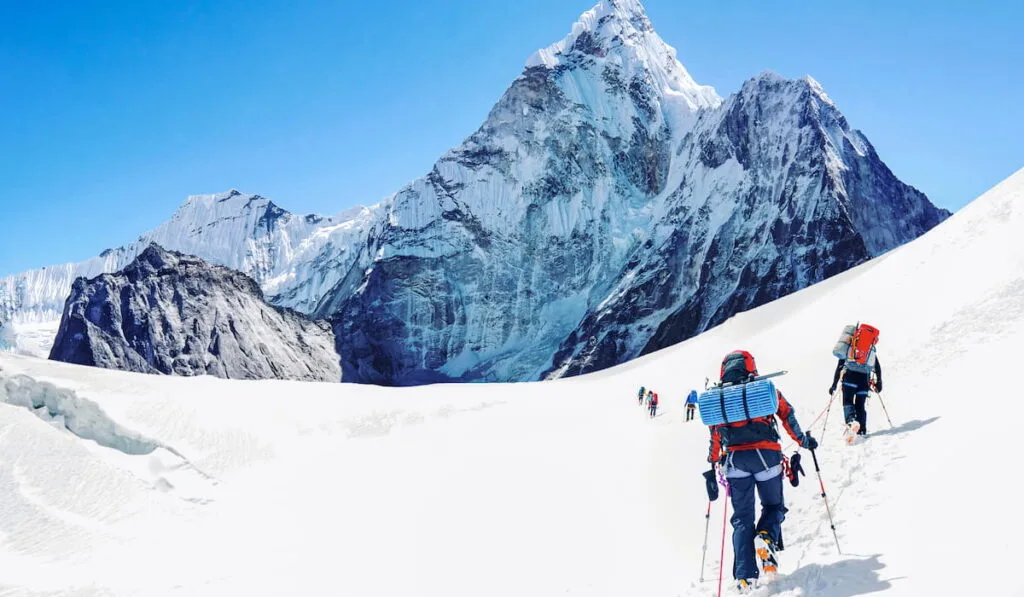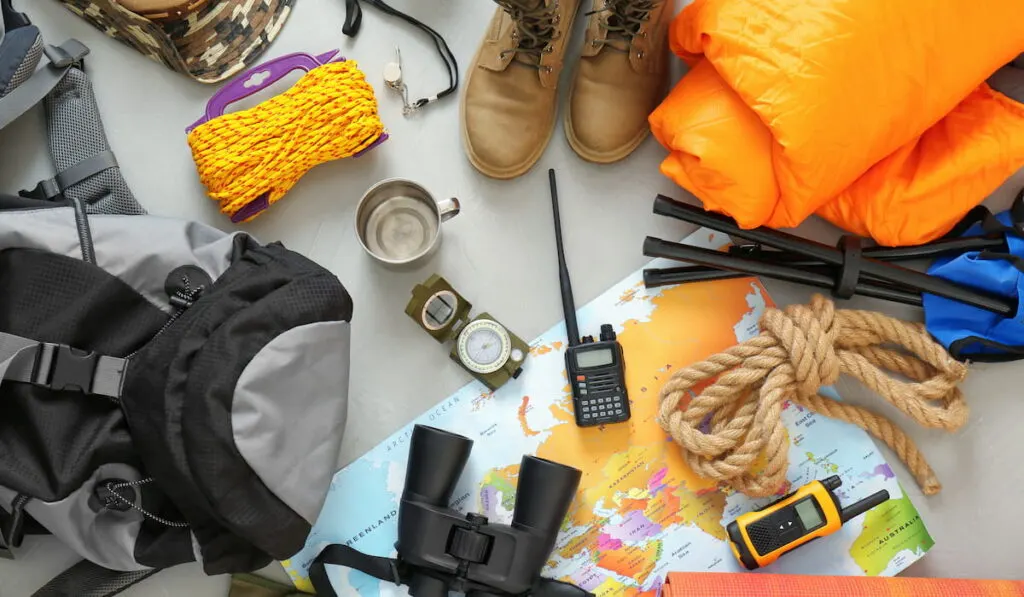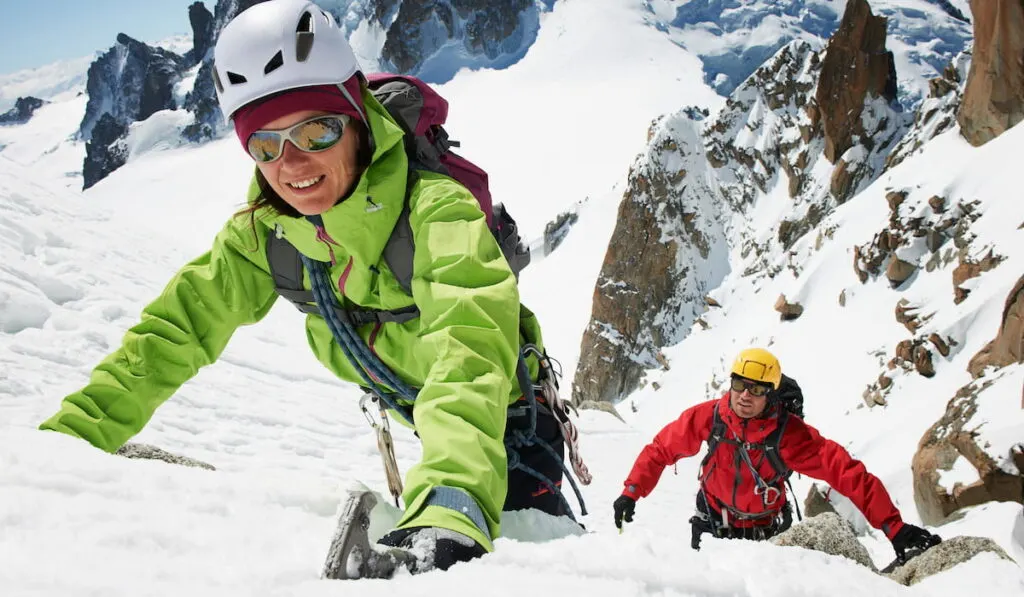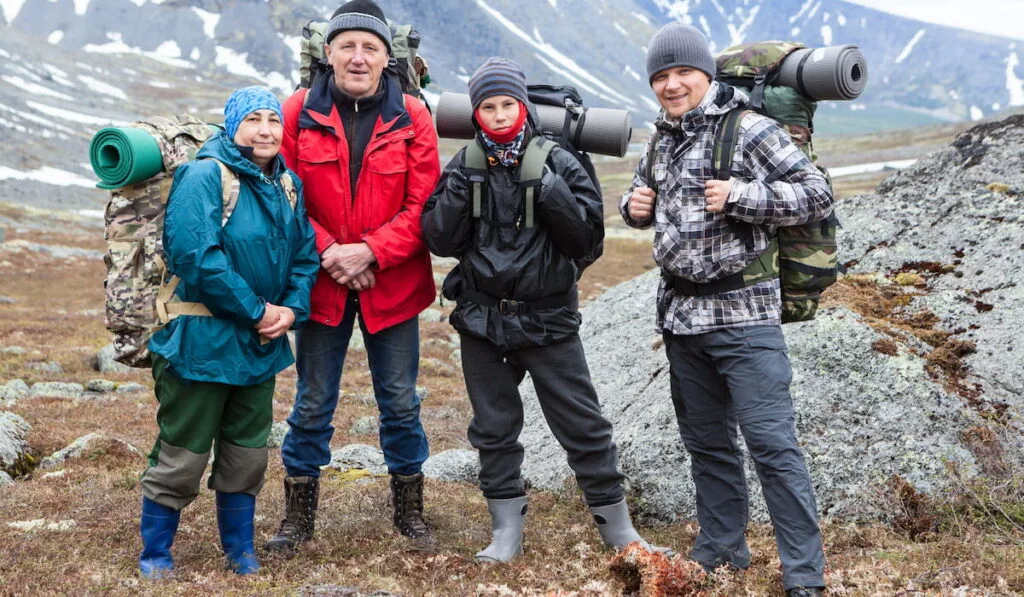Outdoor activities can benefit us in many ways. Research has also proven that being active and not spending most of our time indoors can boost our immune system and lengthen our lifespan.
Not to mention, when you’re physically healthy, your mind is clearer and you are less likely to have mood swings that can affect your daily life.
When choosing which type of activity suits you best, you should consider your capabilities, availability of time, and location.
Some people prefer light and easy outdoor stuff such as cycling, jogging, swimming, or even just walking. But some love to challenge themselves and prefer to go mountaineering and backpacking.
If you fall into the latter category, you should know that there are a few differences between those two activities.
Mountaineering, or mountain climbing, takes you up high in the mountains and provides a more challenging adventure. Backpacking is less strenuous and is more for those willing to see where the path may take them.
But first, let’s take a look at what mountaineering and backpacking really mean.

Table of Contents
What Is Mountaineering?
Mountaineering is one of the rigorous outdoor sports that involve the act of climbing up highly elevated terrains, particularly in mountainous areas. It is also known as alpinism or mountain climbing.
This strenuous sport was founded by a man named Sir Alfred Willis who conquered the summit of Swiss Wetterhorn in 1865.
Unlike hiking, mountaineering is much more difficult and poses greater risks of injuries.
However, this is not the case for daredevils and adventurers who love challenging and pushing their limits to reach the summit.
Mountaineering can also be done on rocky mountains, icy hillsides, and snowy slopes.

What Is Backpacking?
Backpacking falls in the category of travel and recreational activity. In other words, it involves traveling from one place to another under a low budget and with fewer expenses.
Backpackers usually stay in cheap motels or hostels with shared bathrooms for a more extended period of time. Unlike tourists, they also don’t mind camping out in the wild.
When backpacking, your objectives are centered on your daily activities and the places you intend to visit rather than the hospitality of the place you rent.
What’s The Difference Between Mountaineering and Backpacking?
From a general standpoint, we can see that mountaineering and backpacking are different from one another. But what separates one of these activities from the other?
There are a few aspects of both sports that make them distinctly different. Here are some of them:
Location

Mountaineering usually involves climbing up to high-altitude or mountainous regions.
In an attempt to reach the summit, mountaineers have to overcome natural obstacles ranging from harsh terrain to rocky surfaces, slippery slopes, and much more.
For mountains with a much higher altitude, you will also need to be prepared to set up a camp for a day or two before continuing your journey.
If you’re a budding mountaineer, there are a few popular spots that you can explore such as Denali Peak, Mount Fuji, Mount Kinabalu, the Inca Trail to Machu Picchu, Sierra Nevada, Atlas Mountains, and many more.
On the other hand, backpacking is much more relaxed and less rigorous than mountaineering.
However, it also challenges your mental and physical abilities, especially if you’re going to camp or hike up higher places.
Being a backpacker doesn’t limit your options for destinations. You can also go backpacking in other countries. This is usually done in a budget-friendly way.
However, no matter which location you choose, you must be physically fit enough to carry your bag, equipment, and all the essentials on your back from one place to another.
The more secluded and remote your destinations, the greater the challenges you will have to face.

Types of Equipment
Although some equipment can be used in both activities, there is other gear that an experienced mountaineer should bring.
Depending on the location, the higher the altitude, the more equipment you should consider bringing. This includes:
- Mountaineering outfit
- Hiking or climbing boots
- High-performance backpack
- Headlamp
- Compass
- First aid kit
- Food and water
- Waterproof jacket or windbreaker
- Portable stove
- Camping gear
- Knife
- Carabiners
- Pulley
Indirectly, mountaineering will also involve a few hikes up the trail. But the equipment you carry can also be used for hiking.
If you’re also looking to climb up rocky surfaces or snowy slopes, then you will have to carry additional equipment such as:
- A harness
- Ropes
- Hiking poles
- A helmet
- Pickaxes
- A belay device
- Rock climbing footwear
- Snowshoes
- Crampons
- Cordelettes
- and more
For backpackers, what they usually carry is similar to the equipment used for camping and hiking. These include:
- Outdoor clothing
- Heavy-duty backpack
- Waterproof jacket or windbreaker
- Tent
- Sleeping bags
- Water and food container
- Flashlight
- Travel towel
- Hiking boots and outfit

Risks and hazards
Both mountaineering and backpacking come with their own risks and disadvantages. However, the chances are worth taking if you’re determined to pursue this activity.
Mountaineering is physically demanding and more strenuous than backpacking.
There are a lot of uncertainties that can happen during your journey. Beginners are usually advised to undergo a training session by experienced instructors before setting out.
These instructors will also offer to guide new mountaineers during the climb. However, the primary hazard that all mountaineers will face is the weather.
There is no telling how unpredictable the weather could get at a higher altitude. You could face sudden wind changes, oxygen levels, rain, or even mist.
Poor visibility can also expose you to the risk of falling or slipping on rocky terrains. Not to mention the greater risk you should always consider is malfunctioning climbing gear.
Also, you have to be prepared for the risks that come from your surrounding environments such as falling rocks, ice, and even avalanches.
On hot days, exposing yourself to direct sunlight without a proper outfit and enough water can induce heat stroke, dizziness, and extreme dehydration.
And during cold days, especially at a higher altitude, the temperature could drop too low, which can lead to hypothermia, pulmonary edema, breathing difficulties, and other flu-like symptoms.
Being a backpacker will also challenge your physical and mental strength.
Aside from having to carry your load from one place to another, your mental endurance will be put to the test, especially if you’re hiking up to a remote and secluded place.
Along the way, there is no telling what could happen in the wilderness. The weather could change, the treks could become sloppy and rocky, and wild animals may also appear out of nowhere.
Not to mention, if your GPS is broken, you are at risk of getting lost in the middle of nowhere.
On the other hand, if you plan to go backpacking to cities you’ve never been to, there are also dangers lurking.
You could get mugged, be tricked by dishonest merchants, lose your documents or belongings, and worse, have road accidents.
Being aware of these risks doesn’t necessarily mean that you should avoid going backpacking. But as humans, we have to be fully ready and only take calculated risks during our trip.

Cost
Cost is probably the most heated debate that you will come across in any mountaineering or backpacking community.
You may hear opinions from both sides that say their activities don’t cost much compared to other exotic sports. However, we can’t deny the fact that any outdoor activities will cost us money.
It is a matter of how good we are at planning and budgeting.
But statistically, mountaineering costs more than backpacking.
Because of all the climbing, hiking, and wading through the outdoors at a much higher altitude, it will require you to purchase equipment that could cost you as much as $10,000.
The necessary gear you should get is dependent upon the location and the harder the summit you’re trying to climb.
For instance, it could cost you between $30,000 and $120,000 to climb Mount Everest. This doesn’t include other miscellaneous spending that you may need before you make the climb.
On the other hand, backpacking doesn’t require you to fork over a large sum of money. However, you still should invest in high-quality gear for long-term use.
Of course, you can opt for cheaper equipment to save costs. But there is no telling when that low-quality gear will lose its functionality and you will need to buy new gear again.
Generally, it costs around $1,000 to $5,000 to get you a complete set of backpacking gear. Additionally, durable and lightweight gear is usually sold at a higher price.
Also, you will also have to factor in other equipment for hiking if you intend to explore hillsides and mountainous areas. But still, it doesn’t cost as much as mountaineering.

Technical Skills
Mountaineering is one of the most physically demanding sports.
It will challenge your ability to climb up rocky mountains and snowy slopes. One of the key differences that separate mountaineering from backpacking is that it requires a lot of technical skills.
Most experienced mountaineers have mastered three required skills before conquering summits: rock climbing, hiking, and snow climbing.
Beginners are usually required to train themselves with rigorous and high-altitude hiking before diving into the other two skills.
To be a good mountaineer, you must first have good stability, especially when standing or walking up a slope.
This is because you will spend most of your time on foot, putting one before the other when making your way up the mountain.
Having strong feet is definitely an advantage for dedicated mountaineers. Pulling and holding ropes on carabiners will also require you to have good coordination of both hands and feet.
Additionally, they must also have good stamina to consistently get through the obstacles. This doesn’t mean that you can’t rest during your journey.
However, most climbers usually have set a certain amount of time for their trip. The more rest they need, the longer it will take for them to reach the summit.
Mountaineering will also sharpen your critical thinking skills. You will encounter many issues that require you to use your acumen.
For instance, taking your time to climb the rocks will require your good judgment to avoid stepping on porous or loose surfaces.
Furthermore, knowing how to read the environment, weather, and geographical structure of the terrain will ensure that you have calculated all the risks and possibilities before taking another step.
For backpacking, you will also need to have a certain set of skills that are necessary for your survival.
These include choosing the right outfit and gear, hiking, trail navigation, setting up a camp, cooking, food preparation, and even basic first aid skills.
Being a backpacker, you also must do some trekking to get to your destination.
So, it is better for you to know a few trekking skills such as reading a compass, thermoregulation, finding the nearest source of water, avoiding wild animal trails by recognizing their footprints, and many others.

Age Suitability
Mountaineering can be exhausting and physically demanding. If you’re still young and fit, there is nothing wrong with taking on this sport as your past-time activity.
However, for older people, unless they are truly healthy, fit, and well-equipped to do strenuous activities or withstand extreme temperatures, then they may want to reconsider climbing mountains.
But still, no matter how young or old you are, it is advised that you get in shape and train before doing the actual climbing.
With backpacking, you can be more relaxed and easy with your preparation.
However, there is nothing wrong with being in your best form, especially if you’re planning to do some hiking and trekking in remote places.
Backpacking also makes it easier to bring along your children to experience nature and teach them a few things.
But still, try to avoid going too deep into a jungle or forest for the sake of their safety.
Final Thoughts
At the end of the day, you can choose to do both mountaineering and backpacking. There is no reason you should limit yourself to just one activity.
Every one of us has our own interests and objectives that we want out of life. So, never compare, and don’t put up a measuring stick to what you or others can achieve.
What matters most here is the awareness of your own strengths and weaknesses. Don’t worry if you are the only person in your circle that loves mountaineering or backpacking, or even both.
Along your journey, you will likely meet new people who share the same passions and interests.
Resources
- https://ascentionism.com/what-do-you-need-to-bring-mountain-climbing-checklist-plus-pictures/
- https://www.alpineascents.com/blog/mountaineering-vs-backpacking-small-but-substantial-gear-differences/
- https://www.flypgs.com/en/extreme-sports/mountaineering#OriginsofMountaineering
- https://www.outwardbound.org/blog/what-is-mountaineering/
- https://blog.decathlon.in/articles/what-is-mountaineering-benefits-types
- https://www.theoutdoorlife.us/what-is-backpacking/
- https://aswetravel.com/what-is-backpacking/
- https://www.rei.com/learn/expert-advice/backpacking-beginners.html
- https://www.themanual.com/outdoors/climbing-mount-everest-cost/
- https://trailandsummit.com/how-much-does-it-cost-to-get-into-backpacking/
